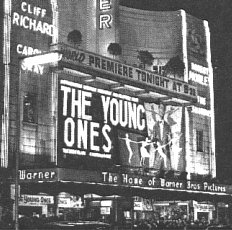 Cinema Cinema  |
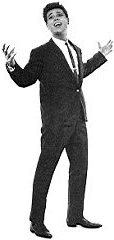 |
|
|
Sixties
City Classic and Cult 60s Film Pages
Science Fiction Pop & Culture Hammer Elvis Presley Man From U.N.C.L.E. Carry On Japanese Sci-Fi & Kaiju Eiga James Bond The Beach Movies All Sixties Films - by Year 1960 1961 1962 1963 1964 1965 1966 1967 1968 1969 Wikipedia |
 Bill
Harry's Sixties - Comment on classic and cult
films, people, and other aspects of the 60s from the creator of Bill
Harry's Sixties - Comment on classic and cult
films, people, and other aspects of the 60s from the creator of
|
Sixties Cinema - (continued)
 |
Home-grown male actors such as Kenneth More, Richard Burton, Jack Hawkins, Peter Finch, Laurence Harvey and Richard Todd maintained or increased their international appeal but female actresses of the same stature were few and far between during this period. American directors such as Joseph Losey (blacklisted in America), Stanley Kubrick and Richard Lester were regularly working in Britain throughout the Sixties, producing cult and classic films such as 'The Knack', 'A Hard Day's Night', 'Help!' and '2001 - A Space Odyssey'. The special effects talent brought together by this particular 1968 production was to significantly enhance the British film industry's importance in this art over the following years. |
Other foreign directors and producers such as Roman Polanski - 'Repulsion' (1965) and 'Cul-de-Sac' (1966) - were also attracted to Britain at this time. Italian director Michelangelo Antonioni made 'Blowup' with David Hemmings and Vanessa Redgrave in 1966 and François Truffaut directed the only film he made outside of France when he made the classic 'Fahrenheit 451' in 1966. Four of the Sixties 'Academy Award' winners for 'Best Picture' were British film productions. (see film pages)
|
Concurrently, Albert 'Cubby' Broccoli and Harry Saltzman spectacularly
combined the more relaxed attitude towards sex with exotic locations,
explosive violent action and a self-effacing style of humour in
the incredibly successful 'James Bond'
series of movies. 'Dr. No' - the first film (1962) - was really
only a British hit, initially. The following year 'From Russia With
Love' was received with much more international interest and 'Goldfinger'
(1964) was a worldwide smash hit, as were all the subsequent productions.
Their box office success led to a plethora of 'spy' films in various
guises including action ('Deadlier Than The Male'), spoof (Monica
Vitti's 'Modesty Blaise' and James Coburn's 'Flint' series) and
rather more serious interpretations such as Michael Caine's superb,
very British 'Harry Palmer' character in 'The Ipcress File', 'Funeral
In Berlin' and 'Billion Dollar Brain' films. An upcoming, young generation of filmmakers and artists who would appeal to the virtually untapped potential of 60s youth audiences of the 60's were one of the 'brave new' hopes for the indigenous industry and, coinciding with the change in youth culture, they came into their own as film censorship reduced its old 'hard line' blanket prohibitions, allowing the use of increasingly free speech, more overt sexuality and innuendo and previously 'forbidden' subjects such as homosexuality, abortion and illegitimacy. |
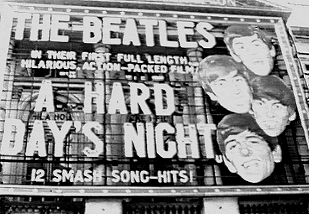 |
This prompted an increase in studio output in many directions, but most noticeably three: The 'Pop Movie' which used the media as a vehicle to carry the British 'Beat Boom' explosion to a much wider visual audience; the British 'farce' genre of innuendo and postcard humour of the 'Carry On' film series which took up the baton from the 'Doctor' films of the Fifties, and a whole range of youth and working-class cultural films that challenged the conventions of British society such as 'Saturday Night, Sunday Morning'; 'A Taste Of Honey'; 'Room at the Top'; 'Up The Junction'; 'Look Back In Anger'; 'Georgy Girl'; 'Alfie' and 'Women in Love'.
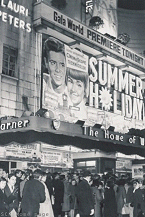 |
New
cinemas were being built in 'New Towns' such as Hemel Hempstead
and Harlow, but many of the older, classic, giant single screen
picture houses were being sold off to be demolished and replaced
by petrol stations, shopping centres and office blocks (which
often contained a small, modern cinema somewhere in the complex
to help with the granting of planning permission). The more profitable
cinemas were extensively modernised but many were just abandoned
and boarded up to become increasingly derelict 'protected' buildings.
By the end of 1965 the number of British cinemas had declined to 1,971 from the 3,050 at the end of 1960 and the 4,700 that were flourishing just after the war. By the mid-1960s, there were only enough major film productions being released to provide new weekly showings for the two largest cinema chains: Rank (which included all the old 'Gaumont' and 'Odeon' cinemas) and the ABC group. Most of the 'independent' cinemas, starved of product by this virtual 'closed shop', were either forced to become part of the larger groups or close down. Occasional attempts were made to play films for a fortnight or longer on general release but audiences, keen to be among the first to see new releases, tended to try and view them in the first week. By the 1960s, many cinemas in city centres were principally engaged in 'road show' or 'hard ticket' engagements. The particularly big attractions, such as the James Bond films, were more suited to a more short-term run before audience interest declined. |
There was a rapidly decreasing need for the large seating capacities and two-tier structure of the leading cinemas. Many, like the Empire Leicester Square, were replaced by a smaller cinema as part of a redevelopment scheme. Substantial sums were invested to remodel the interiors of other cinemas to create two or more auditoria with a rather less grandiose, contemporary décor, beginning with the Odeon, Nottingham, in 1965. The usual method was to just blank off the 'balcony' section, creating 3 smaller cinemas. In the early 1970s the circuit cinemas in the smaller towns and suburbs also began to be subdivided into three-screen 'film centres'.
| Many Odeons were inexpensively converted into 'triples', without closing, by blocking off the rear stalls and subdividing the space into two small cinemas while continuing to use the balcony and existing screen as the main auditorium while work progressed. These conversions sometimes provided poor sightlines and tiny screens downstairs and also had considerable problems with sound penetration. Many ABC cinemas closed completely for more substantial conversion into three auditoria, all with new screens, to create greater capacities. There was a gradual move to separate performances instead of the traditional continuous ones and, for safety reasons,to the elimination of smoking. |
 |
Sittin' In The Back Row Of The Movies . . . .
A few of my personal local memories:
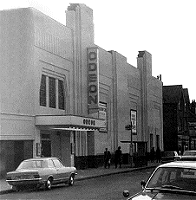 The Odeon, London Road, St.Albans |
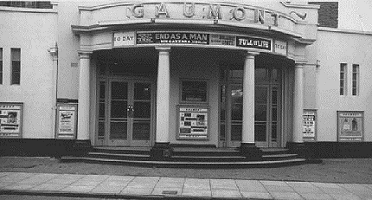 The Gaumont, Hatfield Road, St.Albans |
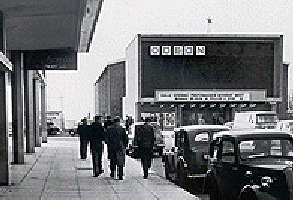 The Odeon, Harlow, 1960 |
The Harlow Odeon was converted into a 3-screen cinema. The St.Albans
Odeon has been closed since the Nineties after being converted
into a multi-screen cinema and later, a bingo hall. The prettiest cinema,
The Gaumont is, sadly, no longer with us......
Unfortunately I have no pictures of the Chequers cinema in Chequer
Street, St.Albans which closed in June 1962
or the Embassy cinema in Harpenden. Can
you help? Please mail me ...
|
UK
web hosting
by Velnet Domain
names | Search
Engine Submission by Haabaa
website directory | Submit
Express | Web
Hosting Shop
|
